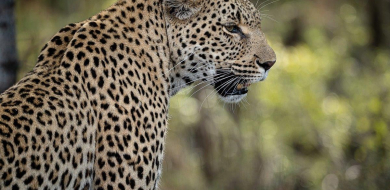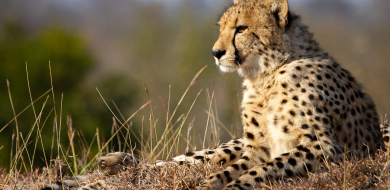Painting With Light
on Dec 17, 2014The word photography comes from the Greek word "photos", meaning painting or drawing with light. The use of light and how you can manipulate it is an important part of getting your desired effect. On this particular evening we had been with this male lion for some time, using the beautiful setting sun to light him up but once the light started to fade most people would have put their cameras away. But this is where I saw a great opportunity to capture something a little more unique.

As the lion settled on a crest I tried to position the vehicle as low as possible and with the use of a spotlight we painted him with the light necessary for him to stand out.
I set my camera to manual mode so as to override any of the cameras automatic settings, and set my shutter speed to 1/80. Aperture was left wide open at f2.8 and ISO was pushed right up to 2000. I used a bean bag to keep the camera as stable as possible as I was taking this picture at a very slow shutter speed - and then waited for him to hold a pose long enough so as to avoid any movement in the photo.
Expose your balance
Richard de Gouveia
Painting With Light Continued...
Capturing a great picture of the stars is always a difficult task. Trying to judge how long to leave the shutter open and what ISO to use leaves us overwhelmed by the task at hand.
Recently we had a photographic group "Nikongear" in, where 12 photographers came to join us for 6 nights of pure photography. In order to maximise the experience we decided to try photographing the glory of the African sky with the aid of a beautiful euphorbia.

Now one of the key things with star photography is to have some form of subject to give the vastness of space some sense of scale and to not get lost in just the stars. Each time you photograph the stars it will be different.
For this image we used a tree euphorbia as a subject and painted it with light by using a flashlight for no more than a second before turning the light off. The ISO was set to 2500 with a shutter speed of 13 seconds and aperture as big as possible, in this case f3.5. Remember that the stars are always moving and if you leave the shutter open for any longer than 15 seconds your stars will turn out looking like sausages rather than the elegant balls of burning gas they should be.
Expose your balance
Richard de Gouveia






